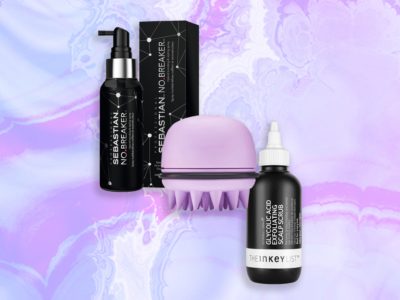
With serious carpe-diem vibes, people are “allocating funds and time to self-care and prioritizing things that they may have put on the backburner,” she says. Knowing life can change in an instant, the pandemic patient is anything but wishy-washy, Hirmand adds: “They either book something or not — they don’t take days or weeks to decide.”
In the Before Time, however, it was typical for patients to meet with doctors about procedures, and then just…wait. Now, in addition to juggling previously scheduled patients, says Sarmela Sunder, a board-certified facial plastic surgeon in Beverly Hills, “I’m having people who I consulted with a year ago for surgery, who didn’t think they’d have the downtime, calling back and saying, ‘OK, I’m ready.'”
Part of this act-now attitude springs from uncertainty: “There’s still a little bit of fear about what fall and winter will look like,” notes Weiser. “Are we going to see a second peak? Are we going to have another shutdown? I think people feel that this is their chance.”
Doctors say patients are more ravenous than usual. “They’re like, Well, I’m here now, so I mine as well get everything done,” says San Diego board-certified dermatologist Arisa Ortiz. People who used to come in for baby Botox and a single syringe of HA suddenly want “the works.”
Those who’ve managed to maintain a steady income may also be finding themselves more flush than they’d otherwise be. “I think a lot of people realize that [for months] they didn’t shop, they didn’t vacation, they didn’t go to dinners with friends,” Weiser adds. “And when they think of all the money they saved, there’s a little less guilt associated with spending a couple thousand dollars [on procedures] — it just feels more attainable right now.”
Particularly when you frame these fixes as a worthy self-investment. “Plastic surgery is more artisanal craftsmanship than a scalable commodity,” Devgan notes. During a pandemic, “there may be fewer occasions to wear a sequined gown, but we all exist in our physical trappings, and you use your face every day” — a notion that seems almost intuitive right now. While aesthetic medicine, like any industry, ebbs and flows, she says, “the concept of people investing in high-quality, highly bespoke surgery and procedures is constant.”
Devgan’s faith in this fact no doubt buoyed her throughout the prolonged “nonessential” shutdown in New York City, as she was in the throes of construction on a new Park Avenue practice when the pandemic hit. “In some ways, the timing was terrible, but in other ways, we were able to take many of the learnings of this time and pivot the design of the office to create a temperature checkpoint in the lobby, a socially distanced reception room, an advanced cleaning protocol, and individual restrooms for patient exam rooms,” she says.
ORs and Exam Rooms — Proverbial Ports in a Storm
Which raises an important point: even though filler is once again following freely and ORs are seeing more action than they have in months, physicians have not loosened the strict COVID-19 safety protocols they enacted upon reopening. With appreciation for these measures, “patients have come to realize that [cosmetic] procedures can be done in a very safe way,” says Weiser — and this too is encouraging folks to visit their dermatologists and plastic surgeons.





